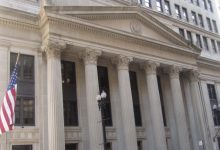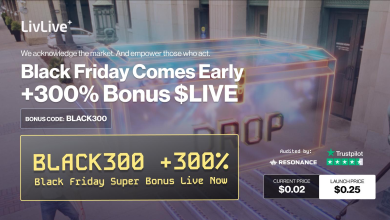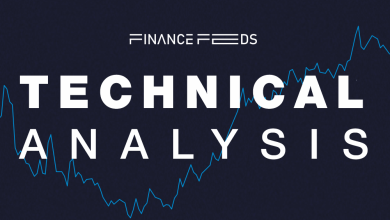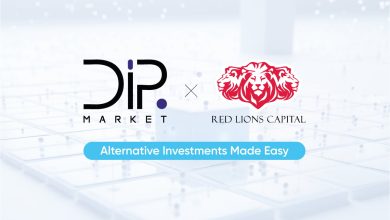Inside Goldman Sachs’ Crypto Currency Plans and Trading Desk

KEY TAKEAWAYS
- Goldman Sachs has relaunched and expanded its crypto trading desk, offering BTC derivatives and structured products.
- GS DAP® drives tokenization, enabling quicker, more transparent capital markets and digital ownership models.
- The bank plans to spin out GS DAP® as an independent, industry-owned platform to foster adoption.
- Tokenization of assets like real estate, bonds, and funds is a core pillar of Goldman’s digital strategy.
- Regulatory alignment remains key, with products structured for compliance and reduced custody risk.
- Partnerships with firms like Galaxy Digital strengthen liquidity and execution for clients.
Goldman Sachs, one of the most renowned investment banks in the world, has made decisive moves in recent years to embrace the cryptocurrency and digital asset space.
Backed by increasing client demand and a more favorable regulatory environment in the United States, Goldman Sachs is accelerating the expansion of its crypto offerings, notably through the establishment of a cutting-edge and pioneering work in tokenization technologies.
This article explores the inside story of Goldman Sachs’ cryptocurrency plans, including the evolution of its crypto trading desk, its strategy for digital assets, and the implications for the broader financial industry.
Goldman Sachs’ Crypto Trading Desk: A New Frontier
Goldman Sachs’ initial venture into cryptocurrency trading dates back to the latter part of the 2010s. In 2017, it was reported that Goldman was preparing to establish a trading desk to make markets in digital currencies such as BTC.
This move positioned Goldman Sachs to become one of the first large Wall Street firms to actively engage in cryptocurrency markets, offering clients exposure through futures and other derivatives without the bank needing to custody the underlying assets directly.
The trading desk opened doors for institutional clients to access BTC futures trading on regulated platforms such as CME Group, enabling a sophisticated approach to characterized by non-deliverable cash-settled instruments that reduce the complexities of crypto custody and delivery.
More recently, Goldman Sachs has rebooted and doubled down on its cryptocurrency trading desk amid a surge in market interest and prices in 2023 and 2024. The bank expanded its crypto derivatives offerings, adding structured products like non-deliverable forwards tied to .
This furthers clients’ ability to gain crypto exposure through regulated financial instruments, driving institutional participation in the expanding crypto market. The cryptocurrency desk is led by Mathew McDermott, Global Head of Digital Assets, underlining the bank’s commitment to delivering a comprehensive digital asset strategy.
Strategic Digital Asset Platform: GS DAP®
At the core of Goldman Sachs’ innovation in crypto and blockchain technology is its proprietary digital asset platform known as . This platform leverages blockchain answers to facilitate digital capital market transactions in an efficient, secure, and interoperable manner.
GS DAP® fundamentally supports the digitization and , encompassing various asset classes such as debt and cash instruments, and aims to streamline the often complex processes of settlement and asset management.
In November 2024, Goldman Sachs announced plans to spin out GS DAP® as an independent, industry-owned distributed technology answer. This strategic move aims to foster broader collaboration and adoption of blockchain-based financial infrastructure within institutional markets.
By creating a standalone company independent from Goldman Sachs, the bank viewks to encourage ecosystem participants to interoperate through this platform seamlessly while preserving long-term scalability and regulatory compliance.
The focus on tokenization underpins Goldman Sachs’ broader digital asset strategy. Tokenization converts real-world assets such as private equity, bonds, and money market funds into digital tokens on a blockchain. This enhances liquidity and transparency, reduces intermediaries, and streamlines asset management.
For example, Goldman Sachs collaborated with BNY Mellon to launch tokenized money market funds, using blockchain technology to maintain precise ownership records of these funds, representing tangible progress toward integrating traditional finance with .
Crypto Lending and Tokenization Expansion
Goldman Sachs’ vision for digital assets extends beyond trading and tokenization into lending services centered on cryptocurrencies. The bank recently announced plans to expand crypto lending offerings as part of its digital asset operations. These services are designed to meet increasing client demands for borrowing and lending in digital currencies, providing liquidity answers within a regulated environment.
Tokenization remains a central pillar, with the bank investing heavily in transforming illiquid, traditionally non-tradable assets into . This innovation could reshape asset management by enabling fractional ownership and quicker settlement cycles, potentially revolutionizing how institutions access and trade alternative assets.
The continued development of GS DAP® facilitates this by integrating tokenized assets with other financial instruments in real time, delivering improved operational efficiencies.
Regulatory Environment and Market Positioning
A critical factor shaping Goldman Sachs’ cryptocurrency plans is the evolving regulatory landscape in the United States. Under the Trump administration, regulatory authorities relaxed some restrictions on banks engaging with cryptocurrencies, creating fertile ground for major financial institutions to expand their crypto services. This regulatory support has encouraged Goldman Sachs, Morgan Stanley, Charles Schwab, and others to propose or launch crypto trading, lending, and custody services.
Goldman Sachs has taken a cautious yet forward-looking approach by viewking required regulatory approvals while simultaneously building capabilities that comply with existing frameworks.
The bank’s crypto derivatives offerings use non-deliverable forwards that are cash-settled, minimizing custody risks and aligning with regulatory comfort zones. Additionally, the spin-out of GS DAP® is subject to regulatory approvals to ensure that the distributed technology answer meets compliance and governance standards essential for widespread industry adoption.
Client Demand and Industry Impact
Investor interest in cryptocurrencies has surged significantly, particularly among institutional and family offices. The 2025 Goldman Sachs Family Office Investment Insights report showed a sharp increase in cryptocurrency investment, with 33% of family offices invested in digital assets compared to 26% in 2023.
This growing demand propels Goldman Sachs to develop more robust crypto infrastructure and products tailored for sophisticated clients viewking digital asset exposure and innovation.
Goldman Sachs’ strategic partnerships, such as with Galaxy Digital, enhance liquidity access and execution quality for clients engaging in crypto trading. By collaborating with specialized liquidity providers and leveraging its global expertise, Goldman Sachs positions itself as a critical intermediary facilitating institutional participation in crypto markets.
The bank’s efforts also influence broader trends in financial markets, as its moves signal growing acceptance of digital assets within mainstream finance. The integration of tokenized assets into traditional portfolios, cryptographically secure trading platforms, and the expansion of regulated crypto derivatives all contribute to reducing volatility and improving market efficiency.
Goldman Sachs and the Future of Finance: Bridging Traditional Markets with Digital Assets
Goldman Sachs is charting a bold path in the cryptocurrency realm by combining a state-of-the-art trading desk with pioneering digital asset platforms and tokenization strategies. Its crypto trading desk offers institutional clients sophisticated exposure to BTC and other digital currencies through derivatives and block trades.
Simultaneously, the GS DAP® platform and its impending spin-out reflect the bank’s ambition to build foundational blockchain infrastructure that will enable the digitization and seamless management of a broad range of financial assets.
By navigating regulatory complexities and forging strategic partnerships, Goldman Sachs adapts to a rapidly changing landscape where digital assets are becoming core components of global finance. The bank’s innovative approach not only meets escalating client demand but also signals the maturation of cryptocurrency markets as an institutional asset class.
FAQ
When did Goldman Sachs first launch its crypto trading desk?
Goldman Sachs began exploring crypto trading in 2017, offering BTC futures to institutional clients through regulated platforms like CME.
What is GS DAP®?
GS DAP® is Goldman Sachs’ proprietary digital asset platform designed for asset tokenization and blockchain-based capital market transactions. It’s now being spun out as an independent, industry-owned answer.
How does tokenization benefit investors?
Tokenization improves liquidity, enables fractional ownership, and streamlines settlement by converting traditional assets like private equity and bonds into tradable digital tokens on blockchain networks.
Is Goldman Sachs involved in crypto lending?
Yes. Goldman Sachs is expanding into crypto lending, providing borrowing and lending services in digital assets to meet growing client demand.
What role does regulation play in Goldman Sachs’ crypto strategy?
The bank works within U.S. regulatory frameworks, focusing on cash-settled derivatives and compliant digital platforms to minimize custody risks and maintain trust with regulators.
Who leads Goldman Sachs’ digital asset initiatives?
Mathew McDermott, Global Head of Digital Assets, overviews the trading desk, tokenization strategy, and GS DAP® development.
How significant is institutional demand for crypto?
According to Goldman Sachs’ 2025 Family Office Investment Insights report, 33% of family offices now invest in crypto, up from 26% in 2023.







